Blog Archives
Dealing with Toenail Fungus
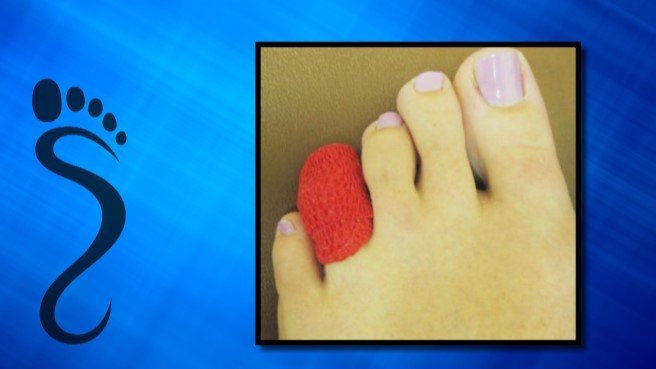 Having toenail fungus can be very painful and it may lead to many different problems. Although you may be tempted to use medication to treat the fungus, you should consult with a doctor before doing so. You can also use creams and ointments in order to treat the fungus on your toe. Essential oils can help with protecting the fungus against dust. The most popular essential oils used to fight toenail fungus are olive oil, lavender oil, tea tree oil, and oregano oil.
Having toenail fungus can be very painful and it may lead to many different problems. Although you may be tempted to use medication to treat the fungus, you should consult with a doctor before doing so. You can also use creams and ointments in order to treat the fungus on your toe. Essential oils can help with protecting the fungus against dust. The most popular essential oils used to fight toenail fungus are olive oil, lavender oil, tea tree oil, and oregano oil.
While toenail fungus is troublesome to eradicate, it is not impossible. For more information about treatment, contact Dr. Sharon Pletcher of Pennsylvania. Our doctor will attend to your foot and ankle needs.
Toenail Fungus Treatment
Toenail fungus is a problem which affects many people and is hard to get rid of. Fortunately, there are several methods to go about treating toenail fungus.
Antibiotics & Treatments
Lamisil – is the most commonly effective treatment for toenail fungus. It is available as an antibiotic Terbinafine tablet and cream. Terbinafine is a chemical component which kills fungal growth on the body. Applying regular doses will gradually kill the fungal growth. It is important to keep the area clean and air free.
Talcum powder – applying powder on the feet and shoes helps keep the feet free of moisture and sweat.
Sandals or open toed shoes – wearing these will allow air movement and help keep feet dry. They also expose your feet to light, which fungus cannot tolerate. Socks with moisture wicking material also help as well
Alternative Treatments
There are always surgical procedures that are available for toenail fungus. Some people would like immediate quick removal of toenail fungus. Surgeons will be able to cut through and remove the growth using laser surgery. It is important not to try and remove it yourself. Once removed, your old shoes will need to be replaced to avoid reinfection.
If you have any questions, please feel free to contact our office located in State College, PA. We offer the newest diagnostic and treatment technologies for all your foot care needs.
Read more about Toenail Fungus
Certain Foot Problems can hint toward Systemic Issues
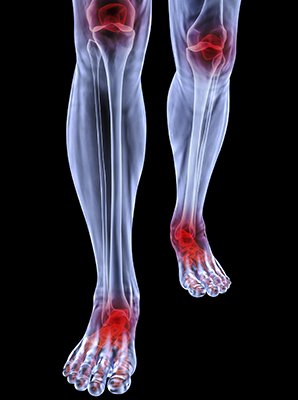 The feet, being the base of the body, may have a larger effect on the entire body than people expect. Certain foot conditions may in fact be a sign of systemic disease in other parts of the body. Spoon-shaped or concaved toenails, otherwise known as koilonychias, are mainly associated with nutritional deficiencies but can also be a sign of genetic disorders, circulatory problems, autoimmune diseases, and musculoskeletal conditions. Toenails that are various colors or textures can also suggest other systemic problems.
The feet, being the base of the body, may have a larger effect on the entire body than people expect. Certain foot conditions may in fact be a sign of systemic disease in other parts of the body. Spoon-shaped or concaved toenails, otherwise known as koilonychias, are mainly associated with nutritional deficiencies but can also be a sign of genetic disorders, circulatory problems, autoimmune diseases, and musculoskeletal conditions. Toenails that are various colors or textures can also suggest other systemic problems.
When dealing with systemic disease of the feet, is extremely important to check the affected areas routinely so that any additional problems are caught quickly. If you have any concerns about your feet and ankles contact Dr. Sharon Pletcher of Pennsylvania. Our doctor will provide the care you need to keep you pain free and on your feet.
Systemic Diseases of the Feet
Systemic diseases affect the whole body, and symptoms usually are displayed in the feet. This condition can make a patient’s ability to walk unbearable. Systemic diseases include gout, diabetes mellitus, neurological disorders, and arthritis.
Gout – is caused by an excess of uric acid in the body. Common symptoms include pain, inflammation, and redness at the metatarsal/phalangeal joint of the base big toe. Gout can be treated by NSAIDs to relieve pain and inflammation, and other drugs that lower the acid levels in the body.
Diabetes mellitus – is an increase in the level of blood sugar that the body cannot counteract with its own insulin. Failure to produce enough insulin is a factor in Diabetes.
Diabetes of the Feet
Diabetic Neuropathy – may lead to damaged nerves and affect the feet through numbness and loss of sensation.
Peripheral Vascular Disease – can restrict the blood flow to the feet, and often times lead to amputation of the feet.
If you have any questions please feel free to contact our office located in State College, PA. We offer the newest diagnostic and treatment technologies for all your foot and ankle needs.
Read more about Systemic Diseases of the Feet
Use the RICE Method to treat Sports Injuries before seeing a Professional
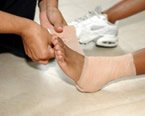 It is very common for athletes to experienceinjuries while playing the sport they love. Although there are ways to avoid such injuries, these methods aren’t always effective. When it comes to managing minor injuries, the RICE technique is often used. RICE stands for Rest, Ice, Compression, and Elevation. Painkillers are also used to treat sports-inflicted injuries; however some people cannot handle the side effects that come along with taking them. Consequently, these people may want to look into other treatment options such as kinesiology tape or chiropractic care. Consult with your doctor if you sustain an injury.
It is very common for athletes to experienceinjuries while playing the sport they love. Although there are ways to avoid such injuries, these methods aren’t always effective. When it comes to managing minor injuries, the RICE technique is often used. RICE stands for Rest, Ice, Compression, and Elevation. Painkillers are also used to treat sports-inflicted injuries; however some people cannot handle the side effects that come along with taking them. Consequently, these people may want to look into other treatment options such as kinesiology tape or chiropractic care. Consult with your doctor if you sustain an injury.
Sports related foot and ankle injuries need proper treatment before players can go back to their regular routines. If you have any concerns, contact Dr. Sharon Pletcher of Pennsylvania. Our doctor can provide the care you need to keep your pain free and on your feet.
Sport Related Foot and Ankle Injuries
Foot and ankle injuries are a common occurrence when it comes to athletes of any sport. While many athletes dismiss the initial aches and pains, the truth is that ignoring potential foot and ankle injuries can lead to serious problems. As athletes continue to place pressure and strain the area further, a mild injury can turn into something as serious as a rupture and may lead to a permanent disability. There are many factors that contribute to sports related foot and ankle injuries, which include failure to warm up properly, not providing support or wearing bad footwear. Common injuries and conditions athletes face, including:
- Plantar Fasciitis
- Plantar Fasciosis
- Achilles Tendinitis
- Achilles Tendon Rupture
- Ankle Sprains
Sports-related injuries are commonly treated using the RICE method. This includes rest, applying ice to the injured area, compression and elevating the ankle. More serious sprains and injuries may require surgery, which could include arthroscopic and reconstructive surgery. Rehabilitation and therapy may also be required in order to get any recovering athlete to become fully functional again. Any unusual aches and pains an athlete sustains must be evaluated by a licensed, reputable medical professional.
If you have any questions please feel free to contact our office located in State College, PA. We offer the newest diagnostic tools and technologies to treat your foot and ankle needs.
Shoes Important in Preventing Running Injuries
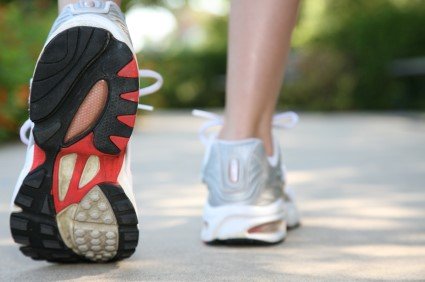 When preventing running injuries, it’s important to wear comfortable shoes that have proper support and fit. Preparing for running involves getting enough training, sleep, hydration, and the proper diets. Especially if you’re just starting a running routine, gradually ease into it and remember to avoid long strides and keep your feet striking below your hips. Stretching before runs is almost important in preventing injuries.
When preventing running injuries, it’s important to wear comfortable shoes that have proper support and fit. Preparing for running involves getting enough training, sleep, hydration, and the proper diets. Especially if you’re just starting a running routine, gradually ease into it and remember to avoid long strides and keep your feet striking below your hips. Stretching before runs is almost important in preventing injuries.
Runners can still be prone to running injuries even with proper precautions. If you are suffering from a running injury,contact Dr. Sharon Pletcher of Pennsylvania. Our doctor can provide the care you need to keep your pain free and on your feet.
How to Prevent Running Injuries
Many common running injuries are caused by overuse and overtraining. When the back of the kneecap starts wearing out and starts causing pain in your knee, this is commonly referred to as runner’s knee. Runner’s knee is a decrease in strength in your quadriceps and can occur if you’re not wearing properly fitted or supporting shoes. To prevent runner’s knee, focusing on hip strengthening is a good idea, as well as strengthening your quads to keep the kneecaps aligned.
What Are Some Causes of Running Injuries?
- One cause of a common running injury is called iliotibial band syndrome.
- Plantar fasciitis is also another common injury.
- Stress fractures can occur from overtraining, lack of calcium, or even your running style.
Best Ways to Prevent Running Injuries
- Wear footwear that fits properly and suits your running needs.
- Running shoes are the only protective gear that runners have to safeguard them from injury.
- Make a training schedule. Adding strengthening exercises as well as regular stretching can help keep you strong and limber and can lessen the possibility of injuries.
- Stretching keeps muscles limber, this will help you gain better flexibility.
If you have any questions please feel free to contact our office located in State College, PA. We offer the newest diagnostic tools and technologies to treat your foot and ankle needs.
Identifying Plantar Fasciitis and its Symptoms
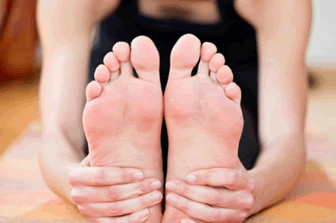 If you have plantar fasciitis, this means that the band of tissue that runs along the sole of your foot, otherwise known as the plantar fasciia, has become irritated and inflamed. Heel pain from plantar fasciitis occurs when the plantar fasciia becomes strained and torn. Plantar fasciitis symptoms flare up most commonly during the mornings. It’s best to see a doctor to properly diagnose and create a treatment plan for your condition. Treating plantar fasciitis involves using orthotics, using a brace, taking anti-inflammatory medicines, stretching, and therapy.
If you have plantar fasciitis, this means that the band of tissue that runs along the sole of your foot, otherwise known as the plantar fasciia, has become irritated and inflamed. Heel pain from plantar fasciitis occurs when the plantar fasciia becomes strained and torn. Plantar fasciitis symptoms flare up most commonly during the mornings. It’s best to see a doctor to properly diagnose and create a treatment plan for your condition. Treating plantar fasciitis involves using orthotics, using a brace, taking anti-inflammatory medicines, stretching, and therapy.
Plantar fasciitis can be very painful and inconvenient. If you are experiencing heel pain or symptoms of plantar fasciitis, contact Dr. Sharon Pletcher of Pennsylvania. Our doctor will treat your foot and ankle needs.
What is Plantar Fasciitis?
Plantar fasciitis is the inflammation of the thick band of tissue that runs along the bottom of your foot, known as the plantar fascia, and causes mild to severe heel pain.
What Causes Plantar Fasciitis?
· Excessive running
· Non-supportive shoes
· Overpronation
· Repeated stretching and tearing of the plantar fascia
How Can It Be Treated?
· Conservative measures – anti-inflammatories, ice packs, stretching exercises, physical therapy, orthotic devices
· Shockwave therapy – sound waves are sent to the affected area to facilitate healing and are usually used for chronic cases of plantar fasciitis
· Surgery – usually only used as a last resort when all else fails. The plantar fascia can be surgically detached from the heel
While very treatable, plantar fasciitis is definitely not something that should be ignored. Especially in severe cases, speaking to your doctor right away is highly recommended to avoid complications and severe heel pain. Your podiatrist can work with you to provide the appropriate treatment options tailored to your condition.
If you have any questions please feel free to contact our office located in State College, PA. We offer the newest diagnostic tools and technologies to treat your foot and ankle needs.
The Different Causes behind Heel Pain
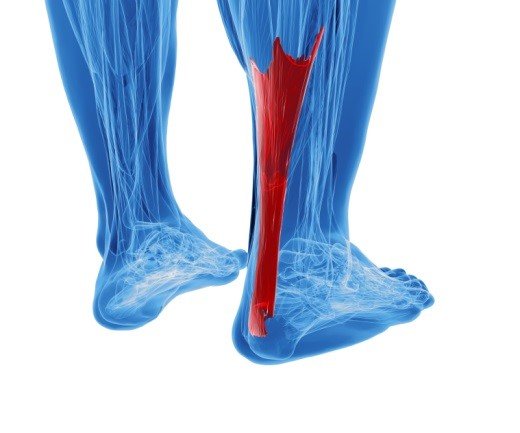 If you’re experiencing heel pain, it may be an indicator of a more serious condition, so it’s important to have it checked out immediately by your podiatrist. Heel pain can affect anyone of any age, and can be caused by many different factors. Shoes that are tight-fitting and offer no support as well as walking and standing for long periods of time are some potential factors. Treating your heel pain involves icing and stretching your feet, making sure you have comfortable shoes, resting from extensive physical activity, and seeing your doctor.
If you’re experiencing heel pain, it may be an indicator of a more serious condition, so it’s important to have it checked out immediately by your podiatrist. Heel pain can affect anyone of any age, and can be caused by many different factors. Shoes that are tight-fitting and offer no support as well as walking and standing for long periods of time are some potential factors. Treating your heel pain involves icing and stretching your feet, making sure you have comfortable shoes, resting from extensive physical activity, and seeing your doctor.
Anyone can wind up suffering from heel pain. For more information, contact Dr. Sharon Pletcher of Pennsylvania. Our doctor will treat your foot and ankle needs.
Causes of Heel Pain
● Heel pain is often associated with plantar fasciitis. The plantar fascia is a band of tissues that extends along the bottom of the foot. A rip or tear in this ligament can cause inflammation of the tissue.
● Achilles tendonitis is another cause of heel pain. Inflammation of the Achilles tendon will cause pain from fractures and muscle tearing. Lack of flexibility is also another symptom.
● Heel spurs are another cause of pain. When the tissues of the plantar fascia undergo a great deal of stress, it can lead to ligament separation from the heel bone, causing heel spurs.
Why Might Heel Pain Occur?
- Wearing ill-fitting shoes
- Wearing non-supportive shoes
- Weight change
- Excessive running
Treatments
Heel pain should be treated as soon as possible for immediate results. Keeping your feet in a stress free environment will help. If you suffer from Achilles tendonitis or plantar fasciitis, applying ice will reduce the swelling. Stretching before an exercise like running will help the muscles. Using all these tips will help make heel pain a thing of the past.
With the advancements in technology and greater knowledge of how muscles and joints work, physical therapists can turn things around dramatically.
If you have any questions please feel free to contact our office located in State College, PA. We offer the newest diagnostic tools and technologies to treat your foot and ankle needs.
There Are Over 100 Types of Arthritis
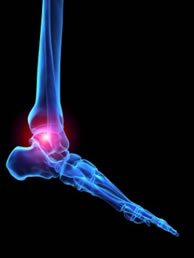 Arthritis can affect anyone of any age and sex. As there are more than 100 types of arthritis, it’s important to get a proper diagnosis and treatment plan for your arthritis condition. Typical symptoms usually include pain, swelling, stiffness, and a lack of mobility in your joints. Arthritis is chronic and can occur sporadically. Symptoms can progress from mild to severe, making it difficult to perform everyday activities.
Arthritis can affect anyone of any age and sex. As there are more than 100 types of arthritis, it’s important to get a proper diagnosis and treatment plan for your arthritis condition. Typical symptoms usually include pain, swelling, stiffness, and a lack of mobility in your joints. Arthritis is chronic and can occur sporadically. Symptoms can progress from mild to severe, making it difficult to perform everyday activities.
Arthritis can be a difficult condition to live with. If you are seeking treatment,contact Dr. Sharon Pletcher of Pennsylvania. Our doctor will treat your foot and ankle needs.
Arthritic Foot Care
Arthritis is a joint disorder that involves inflammation of different joints in your body, such as in your feet. Arthritis is often caused by a degenerative joint disease and causes mild to severe pain in all affected areas. On top of this, swelling and stiffness in the affected joints can also be a common symptom of arthritis.
In many cases, wearing ill-fitting shoes can worsen the effects and pain of arthritis. Wearing shoes that have a lower heel and extra room can help your feet feel more comfortable. In cases of rheumatoid arthritis, the arch in your foot may become problematic. Buying shoes with proper arch support that contour to your feet can help immensely.
Alleviating Arthritic Pain
- Exercises that stretch the foot can prevent further pain and injury and increase mobility
- Most of the pain can be alleviated with anti-inflammatory drugs, heat, and topical medications
- Massages can help to temporarily alleviate pain.
It is best to see your doctor for the treatment that is right for your needs and symptoms. Conditions vary, and a podiatrist can help you determine the right method of care for your feet.
If you have any questions please feel free to contact our office located in State College, PA. We offer the newest diagnostic tools and technologies to treat your foot and ankle needs.
What to Look for in the Right Footwear
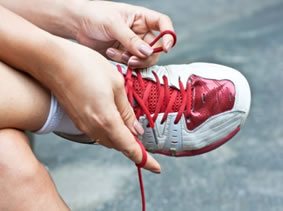 Properly-fitting shoes help protect your feet from long-term foot problems. When choosing proper footwear, it’s important to understand your feet’s structure and biomechanics. Observe your feet and consider your foot arch, foot width and foot length. Know what type of shoes you are looking for, and look for shoes that are flexible, prioritizing comfort when choosing shoes. You can do this by testing out shoes in store before you buy them to see if they are comfortable.
Properly-fitting shoes help protect your feet from long-term foot problems. When choosing proper footwear, it’s important to understand your feet’s structure and biomechanics. Observe your feet and consider your foot arch, foot width and foot length. Know what type of shoes you are looking for, and look for shoes that are flexible, prioritizing comfort when choosing shoes. You can do this by testing out shoes in store before you buy them to see if they are comfortable.
Finding a properly-fitting shoe is important in reducing injuries and preventing foot problems. For more information about treatment, contact Dr. Sharon Pletcher of Pennsylvania. Our doctor will treat your foot and ankle needs.
Proper Shoe Fitting
A common concern when it comes to foot health, having properly fitted shoes can help prevent injuries to the foot. Out feet affect our posture and gait, which in turn affects the biomechanics and overall bodily structure. With 33 joints, 26 bones, and over 100 ligaments, the potential for serious injury is much greater than one realizes. Although the feet cease growth in adulthood, they still change shape as they mature. Here are some factors to consider when it comes to investing in proper fitting shoes:
- Be sure the shoes fit correctly right away
- Ensure the ball of your foot fits comfortably in the widest portion of the shoes
- Even though they may look fashionable, improper fitting shoes can either create adverse conditions or exacerbate existing ones you may already have
- Walk along a carpeted surface to ensure the shoes comfortably fit during normal activity
Keeping in mind how shoes fit the biomechanics of your body, properly-fitting shoes are vitally important. Fortunately, it is not difficult to acquire footwear that fits correctly. Be sure to wear shoes that support the overall structure of your body. Do your feet a favor and invest in several pairs of well-fitted shoes today.
If you have any questions please feel free to contact our office located in State College, PA. We offer the newest diagnostic tools and technologies to treat your foot and ankle needs.
Tips for Managing Your Feet
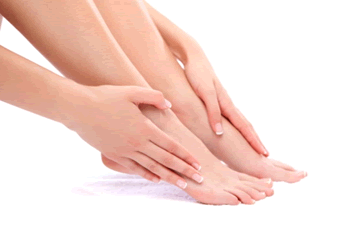 If you have smelly feet, that may be indicative of excessive bacteria, as well as the need for proper management of your feet. Adjusting your diet and eating healthier is the best choice for addressing excessive sweating and smell in your feet. Check your footwear and make sure they are comfortable. Avoid wearing the same pair for long periods of time, especially without socks. Clean your feet regularly, use a spray, and soak them with home remedies.
If you have smelly feet, that may be indicative of excessive bacteria, as well as the need for proper management of your feet. Adjusting your diet and eating healthier is the best choice for addressing excessive sweating and smell in your feet. Check your footwear and make sure they are comfortable. Avoid wearing the same pair for long periods of time, especially without socks. Clean your feet regularly, use a spray, and soak them with home remedies.
Every day foot care is very important, especially for those that are lacking the proper foot care resources. For more information about everyday foot care, contact Dr. Sharon Pletcher of Pennsylvania. Our doctor will treat your foot and ankle needs.
Every Day Foot Care
Often, people take care of their bodies, face and hair more so than they do for their feet. But the feet are a very important aspect of our bodies, and one that we should pay more attention to. After all, without our feet, we would not be able to perform most daily tasks. It is best to check your feet regularly to make sure there are no new bruises or cuts that you may not have noticed before, for example.
For dry feet, moisturizer can easily be a remedy and can be applied as often as necessary to the affected areas. Wearing shoes that fit well can also help you maintain good foot health, as well as making it easier to walk and do daily activities without the stress or pain of ill-fitting shoes, high heels, or even flip flops.
Also, wearing clean socks with closed shoes is important to ensure that sweat and bacteria do not accumulate within the shoe. Clean socks help to prevent athlete’s foot, fungi problems, bad odors, and can absorb sweat.
If you have any questions please feel free to contact our office located in State College, PA. We offer the newest diagnostic tools and technologies to treat your foot and ankle needs.
Carlos Hyde Fully Recovered from Foot Surgery
 Carlos Hyde of the 49ers, who suffered a stress fracture in his foot, had his season cut short by the injury. He had to undergo surgery before the season ended and missed the last games that his team played. Hyde finally recovered from his operation by early April, saying that his “foot is feeling great,” and that “[he’s] good to go.”
Carlos Hyde of the 49ers, who suffered a stress fracture in his foot, had his season cut short by the injury. He had to undergo surgery before the season ended and missed the last games that his team played. Hyde finally recovered from his operation by early April, saying that his “foot is feeling great,” and that “[he’s] good to go.”
Foot surgery is sometimes necessary to fix a foot ailment. To learn more, contact Dr. Sharon Pletcher of Pennsylvania. Our doctor will treat your foot and ankle needs.
When Is Surgery Necessary?
Foot and ankle surgery is generally reserved for cases in which less invasive, conservative procedures have failed to help with the problem. Some of the cases in which surgery may be necessary are:
- Removing foot deformities like bone spurs and bunions
- Severe arthritis that has caused bone issues
- Cosmetic reconstruction
What Types of Surgery Are There?
The type of surgery you receive will depend on the nature of the problem you have. Some of the possible surgeries include:
- Bunionectomy for painful bunions
- Surgical fusion for realignment of bones
- Neuropathy decompression surgery to treat nerve damage
Benefits of Surgery
Although surgery is usually a last resort, it can provide more complete pain relief compared to non-surgical methods and may allow you to finally resume full activity.
Surgical techniques have also become increasingly sophisticated. Techniques like endoscopic surgery allow for smaller incisions and faster recovery times.
If you have any questions please feel free to contact our office located in State College, PA. We offer the newest diagnostic tools and technologies to treat your foot and ankle needs.
More...
UConn’s Katie Lou Samuelson Out Due to Broken Foot
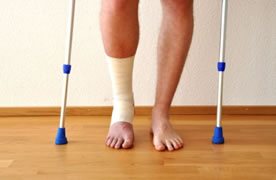 UConn guard Katie Lou Samuelson sustained a broken left foot injury in the game against Oregon State and had to miss the team’s national championship game. She was examined by a trainer and had to wear a walking boot. Her status at the time was unknown, and coach Geno Auriemma at the time had said “I think we’re gonna have to go to practice tomorrow and see what looks really good.”
UConn guard Katie Lou Samuelson sustained a broken left foot injury in the game against Oregon State and had to miss the team’s national championship game. She was examined by a trainer and had to wear a walking boot. Her status at the time was unknown, and coach Geno Auriemma at the time had said “I think we’re gonna have to go to practice tomorrow and see what looks really good.”
A broken foot requires immediate medical attention and treatment. To learn more, contact Dr. Sharon Pletcher of Pennsylvania. Our doctor will treat your foot and ankle needs.
Broken Foot Causes, Symptoms, and Treatment
A broken foot is caused by one of the bones in the foot typically breaking when bended, crushed, or stretched beyond its natural capabilities. Usually the location of the fracture indicates how the break occurred, whether it was through an object, fall, or any other type of injury.
Common Symptoms of Broken Feet:
- Bruising
- Pain
- Redness
- Swelling
- Blue (foot)
- Numbness
- Cold
- Misshapen
- Cuts
- Deformities
Those that suspect they have a broken foot shoot seek urgent medical attention where a medical professional could diagnose the severity.
Treatment for broken bones varies depending on the cause, severity and location. Some will require the use of splints, casts or crutches while others could even involve surgery to repair the broken bones. Personal care includes the use of ice and keeping the foot stabilized and elevated.
If you have any questions please feel free to contact our office located in State College, PA. We offer the newest diagnostic tools and technologies to treat your foot and ankle needs.
Light Exercise Key in combating Diabetes
 Diabetes is a worldwide epidemic, especially in countries such as India. Experts suggest that exercise, even taking just 45-minute walks every day, is necessary in combating diabetes and preventing foot problems like diabetic foot ulcers. Diabetics are especially prone to infection in their feet, therefore it is important to take preventative care measures to treat diabetic feet.
Diabetes is a worldwide epidemic, especially in countries such as India. Experts suggest that exercise, even taking just 45-minute walks every day, is necessary in combating diabetes and preventing foot problems like diabetic foot ulcers. Diabetics are especially prone to infection in their feet, therefore it is important to take preventative care measures to treat diabetic feet.
Diabetic foot care is important in preventing foot ailments such as ulcers. If you are seeking treatment, contact Dr. Sharon Pletcher of Pennsylvania. Our doctor will treat your foot and ankle needs.
Diabetic Foot Care
Diabetes affects millions of people every year. Diabetes can damage blood vessels in many parts of the body, including the feet. Because of this, taking care of your feet is essential if you have diabetes, and having a podiatrist help monitor your foot health is highly recommended.
The Importance of Caring for Your Feet
- Routinely inspect your feet for bruises or sores.
- Wear comfortable shoes that provide adequate support.
Patients with diabetes should have their doctor monitor their blood levels because blood sugar levels play such a huge role in diabetic care. Monitoring these levels on a regular basis is highly advised.
It is always best to inform your healthcare professional of any concerns you may have regarding your feet, especially for diabetic patients. Early treatment and routine foot examinations are keys to maintaining proper health, especially because severe complications can arise if proper treatment is not applied.
If you have any questions please feel free to contact our office located in State College, PA. We offer the newest diagnostic tools and technologies to treat your foot and ankle needs.
Hyperhidrosis, the Excessive Sweating Disorder
 Although sweating is a normal body process used to regulate our bodies’ internal temperatures, excessive sweating, or hyperhidrosis, affects about 220 million people across the world. Apocrine glands, which produce sweat, become overactive in areas of the body such as the feet, hands, and underarms. Hyperhidrosis can occur sporadically and it is best to see a doctor if at-home treatments such as specialized antiperspirants do not work.
Although sweating is a normal body process used to regulate our bodies’ internal temperatures, excessive sweating, or hyperhidrosis, affects about 220 million people across the world. Apocrine glands, which produce sweat, become overactive in areas of the body such as the feet, hands, and underarms. Hyperhidrosis can occur sporadically and it is best to see a doctor if at-home treatments such as specialized antiperspirants do not work.
If you are suffering from hyperhidrosis contact Dr. Sharon Pletcher of Pennsylvania. Our doctor will diagnose and treat your foot and ankle needs.
Hyperhidrosis of the Feet
Hyperhidrosis is a rare disorder that can cause people to have excessive sweating of their feet. This can usually occur all on its own without rigorous activity involved. People who suffer from hyperhidrosis may also experience sweaty palms.
Although it is said that sweating is a healthy process meant to cool down the body temperature and to maintain a proper internal temperature, hyperhidrosis may prove to be a huge hindrance on a person’s everyday life.
Plantar hyperhidrosis is considered to be the main form of hyperhidrosis. Secondary hyperhidrosis can refer to sweating that occurs in areas other than the feet or hands and armpits. Often this may be a sign of it being related to another medical condition such as menopause, hyperthyroidism and even Parkinson’s disease.
In order to alleviate this condition, it is important to see your doctor so that they may prescribe the necessary medications so that you can begin to live a normal life again. If this is left untreated, it is said that it will persist throughout an individual’s life.
A last resort approach would be surgery, but it is best to speak with your doctor to find out what may be the best treatment for you.
If you have any questions please feel free to contact our office located in State College, PA. We offer the newest diagnostic tools and technologies to treat your foot and ankle needs.
Isaiah Taylor Recovering from Plantar Fasciitis
 Point guard Isaiah Taylor of the Texas Longhorns has been suffering from plantar fasciitis, according to head coach Shaka Smart. Following the winning game against the Oklahoma Sooners, Taylor had to skip practice and wear a walking boot for two days. Plantar fasciitis is common among basketball players and can persist for months. Taylor most likely will have to play through his injury for the rest of the reason.
Point guard Isaiah Taylor of the Texas Longhorns has been suffering from plantar fasciitis, according to head coach Shaka Smart. Following the winning game against the Oklahoma Sooners, Taylor had to skip practice and wear a walking boot for two days. Plantar fasciitis is common among basketball players and can persist for months. Taylor most likely will have to play through his injury for the rest of the reason.
Plantar fasciitis can be very painful and inconvenient. If you are experiencing heel pain or symptoms of plantar fasciitis, contact Dr. Sharon Pletcher of Pennsylvania. Our doctor will diagnose and treat your foot and ankle needs.
What is Plantar Fasciitis?
Plantar fasciitis is the inflammation of the thick band of tissue that runs along the bottom of your foot, known as the plantar fascia, and causes mild to severe heel pain.
What Causes Plantar Fasciitis?
· Excessive running
· Non-supportive shoes
· Overpronation
· Repeated stretching and tearing of the plantar fascia
How Can It Be Treated?
· Conservative measures – anti-inflammatories, ice packs, stretching exercises, physical therapy, orthotic devices
· Shockwave therapy – sound waves are sent to the affected area to facilitate healing and are usually used for chronic cases of plantar fasciitis
· Surgery – usually only used as a last resort when all else fails. The plantar fascia can be surgically detached from the heel
While very treatable, plantar fasciitis is definitely not something that should be ignored. Especially in severe cases, speaking to your doctor right away is highly recommended to avoid complications and severe heel pain. Your podiatrist can work with you to provide the appropriate treatment options tailored to your condition.
If you have any questions please feel free to contact our office located in State College, PA. We offer the newest diagnostic tools and technologies to treat your foot and ankle needs.




